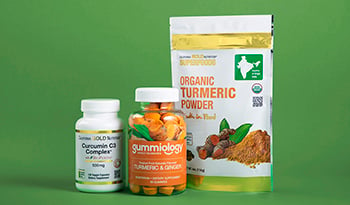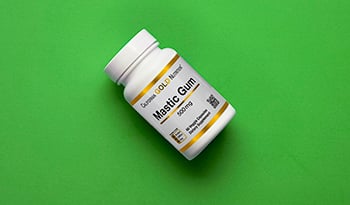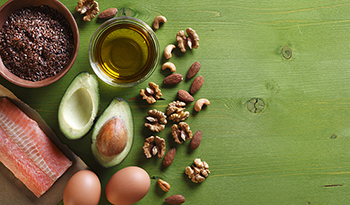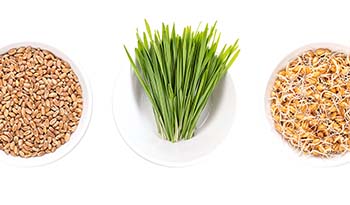Witamina D jest niezbędna dla zdrowia i zapobiegania chorobom

Jeśli istnieje na świecie jedna witamina, która może pomóc zoptymalizować zdrowie i samopoczucie danej osoby, jest to witamina D (znana również jako witamina D3 lub cholekalcyferol). Tradycyjnie niedobór witaminy D był kojarzony z krzywicą, ale ponieważ choroba ta jest obecnie rzadka, wiele osób zakłada, że niedobory witaminy D nie istnieją. Nic bardziej mylnego!
Na szczęście ta bardzo potrzebna witamina może być wytwarzana i wchłaniana do organizmu za darmo, gdy spędzasz czas na słońcu— fale światła ultrafioletowego B (UV-B) ze słońca reagują z formą cholesterolu w naszej skórze, tworząc hormon witaminy D. Jednak dla większości może to nie wystarczyć do osiągnięcia optymalnego stanu zdrowia. Ponadto, ponieważ wiele osób na całym świecie spędza więcej czasu w pomieszczeniach niż na świeżym powietrzu, osiągnięcie odpowiedniego poziomu we krwi ze słońca jest trudne i większość z nich potrzebuje suplementacji.
Tysiące badań przeprowadzonych w ciągu ostatniej dekady wskazują na korzyści zdrowotne wynikające z optymalizacji spożycia witaminy D. Badania te wykazały, że osoby z wyższym poziomem witaminy D we krwi mają niższe ryzyko zawału serca, raka piersi, raka jelita grubego, stwardnienia rozsianego, cukrzycy typu 1 i typu 2, wysokiego ciśnienia krwi i innych powikłań zdrowotnych.
Jednak unikanie słońca jest wspólnym celem wielu osób. Wiele osób na całym świecie, zwykle za radą lekarza, stara się ograniczyć czas spędzany w bezpośrednim świetle słonecznym. Ma to na celu zapobieganie zasadniczo niezagrażającym życiu nowotworom podstawnokomórkowym i kolczystokomórkowym skóry. Czerniak, niebezpieczna forma raka skóry, dotyka 1 na 80 osób. Jednak połowa czerniakowych nowotworów skóry występuje w obszarach ciała nienarażonych na działanie promieni słonecznych.
Próbując uniknąć zachorowania na czerniaka u 1 na 80 osób, w rzeczywistości zwiększamy ryzyko zachorowania na raka piersi (1 na 9), raka jelita grubego (1 na 18) i raka prostaty (1 na 6), ograniczając naszą ekspozycję na promienie słoneczne wytwarzające witaminę D.
Kto ma niedobór?
W mojej praktyce lekarskiej w południowej Kalifornii, miejscu, w którym mamy słoneczne niebo przez ponad 300 dni w roku, czterech na pięciu (80 procent) moich pacjentów ma kliniczny niedobór witaminy D, definiowany przez poziom 30 ng/ml (75 nmol/l) lub niższy.
Powodem tego jest fakt, że niewiele osób spędza wymagane 15 do 20 minut każdego dnia na słońcu, pozwalając swojej twarzy, ramionom i nogom na ekspozycję na światło ultrafioletowe. Nawet 90 procent ludzi na całym świecie cierpi na jej niedobór. Osoby z większą ilością melaniny, która jest odpowiedzialna za ciemniejszą pigmentację skóry, potrzebują do 30 minut na słońcu, aby wytworzyć witaminę D. Osoby w wieku powyżej 65 lat również potrzebują więcej czasu na świeżym powietrzu, aby wytworzyć witaminę D ze względu na zmiany w elastyczności skóry.
Witamina D jest wytwarzana przez skórę wystawioną na działanie promieni słonecznych tylko w określonych porach dnia. Przede wszystkim, jeśli twój cień jest "krótszy" niż twój wzrost, co zwykle ma miejsce między godziną 10:00 a 14:00, następuje produkcja witaminy D. Co ciekawe, jest to również czas, w którym panele słoneczne wytwarzają najwięcej energii!
Ci, którzy stosują filtry przeciwsłoneczne przed wyjściem na zewnątrz, blokują promienie słoneczne przed uderzeniem w skórę i wytwarzaniem witaminy D. . Filtr przeciwsłoneczny powinien być nakładany po 15-30 minutach ekspozycji na światło słoneczne.
Jakie są zagrożenia związane z niskim poziomem witaminy D?
Wysokie ciśnienie krwi (nadciśnienie)
Wysokie ciśnienie krwi dotyka jedną na cztery osoby dorosłe. Na całym świecie 1 miliard ludzi ma wysokie ciśnienie krwi, które jest głównym czynnikiem ryzyka zawałów serca, zastoinowej niewydolności serca i udarów mózgu. Chociaż istnieje wiele powodów, dla których dana osoba rozwija wysokie ciśnienie krwi, badania pokazują, że mężczyźni z niższym poziomem witaminy D są sześciokrotnie bardziej narażeni na nadciśnienie, podczas gdy kobiety były prawie trzykrotnie bardziej narażone. Utrzymanie prawidłowej masy ciała, dieta bogata w owoce i warzywa oraz rutynowe ćwiczenia również pomagają kontrolować ciśnienie krwi.
Co więc może zrobić witamina D? Badania naukowe pokazują, że witamina D pomaga rozluźnić naczynia krwionośne, które przenoszą krew w całym organizmie, co skutkuje niższym ciśnieniem krwi. Niedobór witaminy D jest również prawdopodobnie głównym powodem, dla którego osoby o zwiększonej pigmentacji skóry są bardziej narażone na wysokie ciśnienie krwi.
Ataki serca
Choroby serca są głównym zabójcą w Stanach Zjednoczonych, Europie i Azji. W Stanach Zjednoczonych odpowiada ona za prawie 1 milion zgonów rocznie. Badanie przeprowadzone na Uniwersytecie Harvarda wykazało, że osoby z wyższym poziomem witaminy D we krwi miały o 80% mniejsze ryzyko zawału serca w porównaniu do osób z najniższym poziomem witaminy D we krwi.
Badanie przeprowadzone w Niemczech wykazało, że osoby z niższym poziomem witaminy D we krwi były pięciokrotnie bardziej narażone na śmierć z powodu nagłej śmierci sercowej w porównaniu z osobami z wyższym poziomem witaminy D we krwi. Wiele innych badań wykazało podobne wyniki.
W badaniu z 2017 r. stwierdzono, że poziom witaminy D we krwi był znacznie niższy u pacjentów z zawałem serca, zwłaszcza w Ameryce i Azji, a wystarczający poziom witaminy D we krwi może chronić przed wystąpieniem zawału serca;
Rak piersi
Rak piersi dotknie jedną na dziewięć kobiet w ciągu ich życia. Mammografia pomaga wykryć istniejącego raka, ale priorytetem powinno być zapobieganie jego powstawaniu, a nie tylko próba wczesnego wykrycia.
Podczas gdy spożywanie zdrowej diety przy jednoczesnym utrzymaniu prawidłowej masy ciała również pomaga zapobiegać rakowi piersi, badania pokazują, że witamina D może być również cenna. Badanie przeprowadzone w 2007 roku na Uniwersytecie Kalifornijskim w San Diego wykazało 50-procentowy spadek zachorowań na raka piersi u kobiet, u których poziom witaminy D przekraczał 52 ng/ml (125 nmol/l). Inne badanie wykazało, że kobiety, które mieszkały na obszarach o większej ekspozycji na światło słoneczne, miały od 25 do 65 procent mniej zachorowań na raka piersi.
Liczne inne badania wykazały korzyści witaminy D w zmniejszaniu zachorowalności na raka piersi. Badanie przeprowadzone w lipcu 2017 r. na prawie 51 000 kobiet wykazało, że suplementacja witaminą D zmniejszyła ryzyko zachorowania na raka piersi o 21% u kobiet po menopauzie (tj. bez miesięcznego cyklu miesiączkowego).
Rak okrężnicy i żołądka
Według American Cancer Society, rak jelita grubego odpowiada za 8% wszystkich zgonów z powodu raka u mężczyzn i 9% wszystkich zgonów z powodu raka u kobiet. W 2016 r. na całym świecie odnotowano ponad 1,3 miliona przypadków raka jelita grubego. Na szczęście większości przypadków można zapobiec.
Oprócz zdrowej, bogatej w błonnik diety, witamina D może pomóc w zapobieganiu rakowi okrężnicy. Naukowcy wykazali, że osoby mieszkające na obszarach o większym nasłonecznieniu miały niższy wskaźnik zachorowań na raka jelita grubego. Dwa badania, opublikowane w 2005 i 2007 roku, wykazały, że osoby z większą ilością witaminy D we krwi mogą zmniejszyć ryzyko zachorowania na raka jelita grubego o 50%. Inne badanie wykazało, że większa ilość witaminy D skutkowała 60-procentowym spadkiem zachorowań na raka.
Badanie z 2014 roku wykazało, że osoby, u których zdiagnozowano raka jelita grubego i które miały wyższy poziom witaminy D we krwi, były mniej narażone na śmierć z powodu tej choroby niż osoby z niższym poziomem witaminy D. Podobnie, badanie z 2016 roku wykazało, że rak żołądka występował prawie pięć razy częściej u osób z niedoborem witaminy D.
Inne stany związane z niedoborem witaminy D
Liczne inne badania pokazują i, że osoby z niższym poziomem witaminy D mają wyższe wskaźniki następujących chorób:
- demencja
- pociągnięcia
- choroba tętnic obwodowych
- rak prostaty
- rak jajnika
- rak trzustki
- fibromialgia
- upadki
- złamania
- stwardnienie rozsiane
- toczeń
- reumatoidalne zapalenie stawów
- astma
- autyzm
- łuszczyca
Znaczenie witaminy D jest oczywiste, a jej suplementacja ma kluczowe znaczenie dla Twojego zdrowia.
A co z toksycznością witaminy D?
Nie ma czegoś takiego jak prawdziwa toksyczność witaminy D. Jednak osoby, które przyjmują ponad 10 000 IU witaminy D dziennie przez dłuższy czas, mogą wchłaniać zbyt dużo wapnia, co może prowadzić do podwyższonego poziomu wapnia we krwi i zwiększonej kamicy nerkowej. Osoby z przewlekłą chorobą nerek, wysokim poziomem wapnia we krwi i chłoniakiem muszą skonsultować się z lekarzem przed rozpoczęciem suplementacji witaminą D.
Poznaj swój poziom witaminy D
Poproś lekarza o sprawdzenie poziomu witaminy D we krwi. Będzie musiała zlecić badanie poziomu witaminy D 25-OH we krwi. Większość laboratoriów podaje normalne wyniki wynoszące od 30 ng/ml (75 nmol/l) do 100 ng/ml (250 mmol/l). Optymalny poziom witaminy D we krwi powinien wynosić od 50 ng/ml do 100 ng/ml (125 nmol/l do 250 nmol/l).
Uzupełnienie
Większość osób dorosłych z niedoborem będzie musiała przyjmować dzienną dawkę witaminy D (cholekalcyferolu). witaminy D (cholekalcyferolu) w zakresie 2,000-5,000 IU witaminy D. Niektórzy mogą potrzebować więcej. Kobiety w ciąży i matki karmiące piersią powinny również rozważyć suplementację witaminą D w dawce 5000 IU dziennie. Witamina D może być przyjmowana przez większość zdrowych dzieci w wieku od 1 do 18 lat. Zazwyczaj stosowana dawka wynosi od 1000 do 2000 j.m. dziennie.
Suplementacja witaminą D jest niezbędna przez cały rok. Jest to jednak jeszcze ważniejsze w porach roku, w których światło słoneczne jest minimalne. Niektórzy lekarze mogą zalecić przyjmowanie witaminy D2 (ergokalcyferolu) w dawce 50 000 j.m. raz w tygodniu. W oparciu o badania, witamina D3 jest klinicznie bardziej skuteczna i jest preferowanym suplementem.
Możesz również zwiększyć poziom witaminy D, spędzając 15 minut na słońcu każdego dnia, bez ochrony przeciwsłonecznej, pozwalając na odsłonięcie ramion, twarzy i nóg. Rutynowa aktywność fizyczna na świeżym powietrzu przynosi wiele korzyści zdrowotnych.
Zapobieganie chorobom przewlekłym jest kluczem do długowieczności i wysokiej jakości życia. Codzienna suplementacja witaminą D jest jedyną witaminą, która może pomóc nam osiągnąć ten cel
Zastrzeżenie:
Powyższe informacje służą wyłącznie celom edukacyjnym. W kwestiach zdrowotnych należy zawsze konsultować się z lekarzem lub wykwalifikowanym pracownikiem służby zdrowia. Produkty i oświadczenia dotyczące określonych produktów na tej stronie lub za jej pośrednictwem nie zostały ocenione przez amerykańską Agencję ds. Żywności i Leków i nie są zatwierdzone do diagnozowania, leczenia lub zapobiegania chorobom. Przeczytaj więcej o wyłączeniu odpowiedzialności iherb.com&rsquo.
Referencje:
- Recepta na witaminę D autorstwa Eric Madrid MD, Opublikowano 2009
- Lin S-W, Wheeler DC, Park Y, et al. Prospektywne badanie ekspozycji na promieniowanie ultrafioletowe i ryzyka zachorowania na raka w USA. International Journal of Cancer Journal International du Cancer. 2012;131(6):E1015-E1023. doi:10.1002/ijc.27619.
- Chen S, Sun Y, Agrawal DK. Niedobór witaminy D i nadciśnienie tętnicze. Journal of the American Society of Hypertension : JASH. 2015;9(11):885-901. doi:10.1016/j.jash.2015.08.009.
- Rostand, Stephen G., Vitamin D, Blood Pressure, and African Americans: Toward a Unifying Hypothesis Clin J Am Soc Nephrol 5: 1697–1703, 2010. doi: 10.2215/CJN.02960410
- O'Brien KM1, Sandler DP2, Taylor JA2, Weinberg CR1. Surowica Witamina D i ryzyko raka piersi w ciągu pięciu lat. raka piersi w ciągu pięciu lat. Environ Health Perspect. 2017 Jul 6;125(7):077004. doi: 10.1289/EHP943.
- Palmer JR, Gerlovin H, Bethea TN, et al. Przewidywana 25-hydroksywitamina D w odniesieniu do częstości występowania raka piersi w dużej kohorcie Afroamerykanek. Breast Cancer Research : BCR. 2016;18:86. doi:10.1186/s13058-016-0745-x.
- Kim Y, Franke AA, Shvetsov YB, et al. 25-hydroksywitamina D3 w osoczu jest związana ze zmniejszonym ryzykiem raka piersi po menopauzie u białych: zagnieżdżone badanie kliniczno-kontrolne w wieloetnicznym badaniu kohortowym. BMC Cancer. 2014;14:29. doi:10.1186/1471-2407-14-29.
- Krążące poziomy 25-hydroksywitaminy D i rokowanie wśród pacjentów z rakiem: Przegląd systematyczny Adetunji T. Toriola, Nhi Nguyen, Kristen Scheitler-Ring i Graham A. Colditz Cancer Epidemiol Biomarkers Prev 1 czerwca 2014 (23) (6) 917-933; DOI:10.1158/1055-9965.EPI-14-0053
- Jizhen Huang, Zhiwei Wang, Zhipeng Hu, Wanli Jiang, Bowen Li, Związek między witaminą D we krwi a zawałem mięśnia sercowego: Metaanaliza obejmująca badania obserwacyjne, Clinica Chimica Acta sierpień 2017
- Houghton, Lisa A. i Vieth, Reinhold. "The case against ergocalciferol (vitamin D2) as a vitamin supplement.” The American Journal of Clinical Nutrition. Październik 2006 r. Vol. 84 no. 4. 694-697. Web. http://ajcn.nutrition.org/content/84/4/694.full
WYŁĄCZENIE ODPOWIEDZIALNOŚCI:Celem niniejszej Strefy Zdrowia nie jest stawianie diagnoz...














































































 Spis treści
Spis treści
















